The history of bonsai cultivation dates back more than one century and every year the popularity of technology is only growing. You can grow a bonsai tree at home without much effort. You will need patience, as the procedure is long, and knowledge of some rules.
Material Content:
Description
In the modern world, many tend to think of a bonsai as a tiny tree, but in reality everything looks a little different. It would be more correct to say that bonsai is a kind of art, a kind of creativity, which will require a lot of effort. This technique allows you to grow a small copy of almost any tall tree.
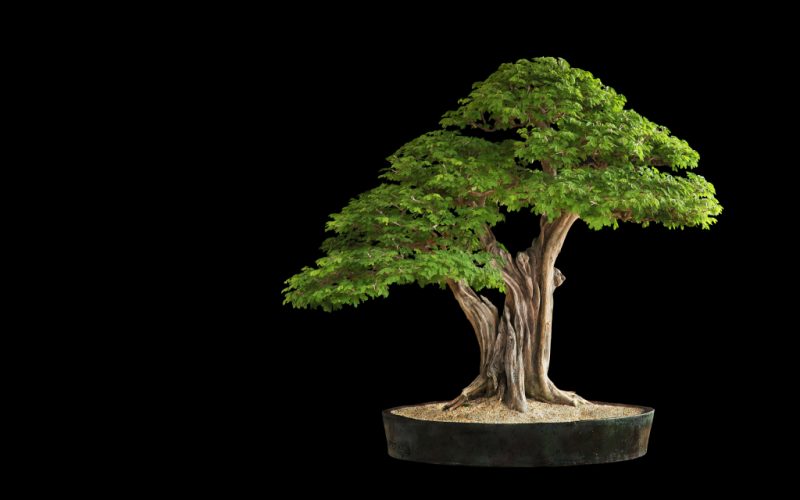
Celestial Empire is considered the birthplace of art, the first mention of it appeared about 2 thousand years ago, and about 6 centuries ago it came to Japan. Over time, the Japanese improved and systematized the cultivation of elegant trees, which helped to make their work more beautiful and in demand. Bonsai gained particular popularity in the twentieth century. The Europeans have simplified the technique of creating trees, which today allows everyone to grow a plant at home. To do this, you should be patient, take work seriously and show love for your future plant.
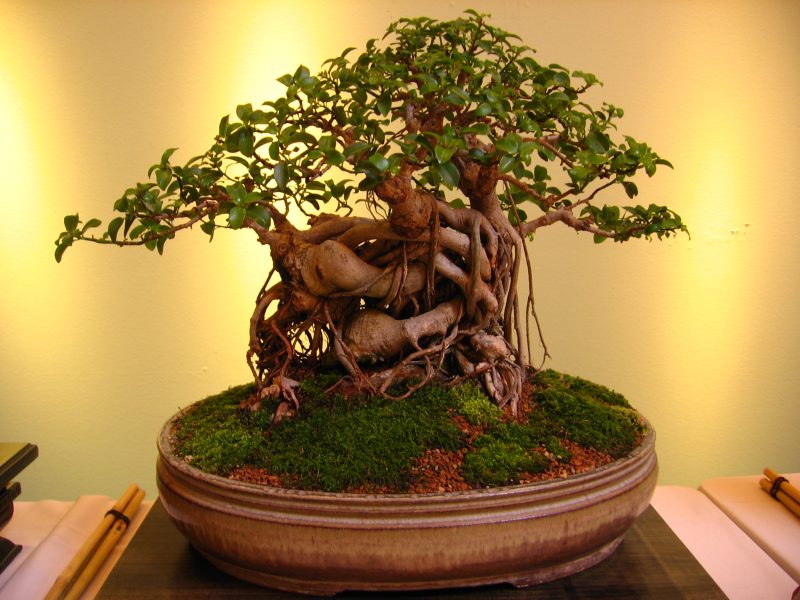
The reduced copy should be completely similar to an adult tree. With proper cultivation, the bonsai has a reliable trunk with formed roots, and through the leaves you can see small twigs. Japanese bonsai tree grown by this method, as a rule, is of limited size, the largest plant reaches a height of no more than 120 centimeters.
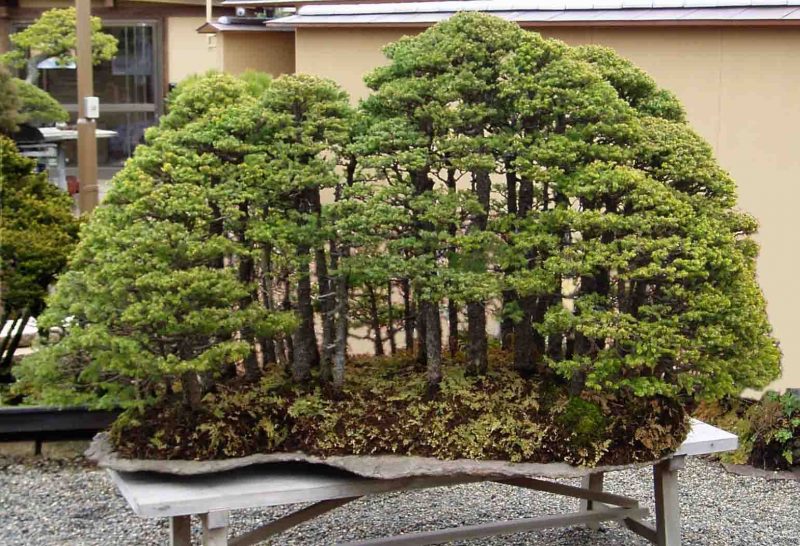
Therefore, bonsai can be divided into several categories:
- tiny - height up to 5 cm;
- miniature - 5-15 cm;
- small - 15-30 cm;
- medium - 30-60 cm;
- large - 60-120 cm.
Plants with a height of 5-30 cm are considered the most popular. It is they who are able to convey real beauty, fragility and grace, so you can plunge into the magical world of miniature things.
Features of growing bonsai

The process of growing a miniature tree is quite lengthy, consists of several stages and requires constant attention.
- Seed Care. It can stretch even for several years. Choosing a plant is necessary taking into account the climate of your region. The most unpretentious are pine and ficus.
- Young sprout care - This is one of the most important stages. The plant needs regular ventilation. After 4 leaves appear on the sprout, the future tree is transplanted, after 2 months it is recommended to start feeding. In winter, the sprout is better to stand on the windowsill, but all feeding in this period is minimized.
- Adult Plant Care - constantly adjust the amount of light and moisture. Water is introduced not only in the form of irrigation, but also by spraying. After some time, it is necessary to take up the formation of the crown.
Common ways to grow bonsai at home
Beginners quite often ask about how to grow a bonsai tree at home.
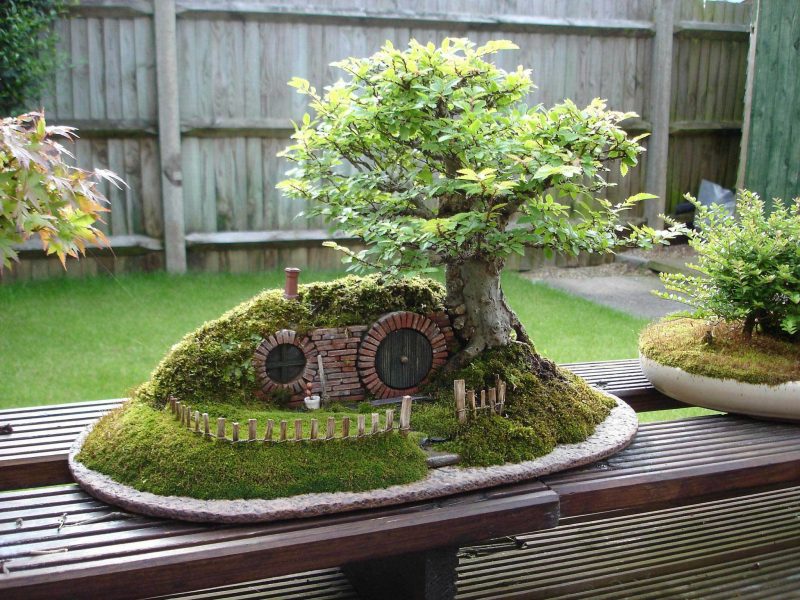
In the modern world there are several options:
- Mise Way - Perhaps this is a suitable option for those who have just decided to master the bonsai technique. Its basis is the sowing of seeds that are collected in the environment. This makes it possible to choose exactly the sprout you like, and already from it begin to form the future tree.
- Toriki Method - allows bonsai to grow from cuttings or bends. On the branch, the bark is cut or trimmed, after which it is treated with a root growth stimulator, wrapped in moss and film. In this state, the plant should remain for about 3 months. All this time, do not forget about watering.
- Yamadori's Way - in the literal translation its name means "found and dug up." With the advent of spring is the right plant. It must be dug and left for another couple of months until the air roots begin to form. Then the powerful root processes are shortened, and the plant is dug out of the soil and transferred to a special pot.
- Weki Way - It consists in buying the finished plant in any nursery, after which it is cut and transplanted into a special flat pot. In addition, you can buy a ready-made bonsai, and then continue its cultivation, taking into account personal preferences.
Choosing a pot and soil for wood
It’s important to take responsibility for choosing a pot that will not only provide the necessary growth, but also create a complete composition. It is desirable that the height of the container is proportional to the plant by 2/3. The pot should be made of ceramic, well burned, with drainage holes.
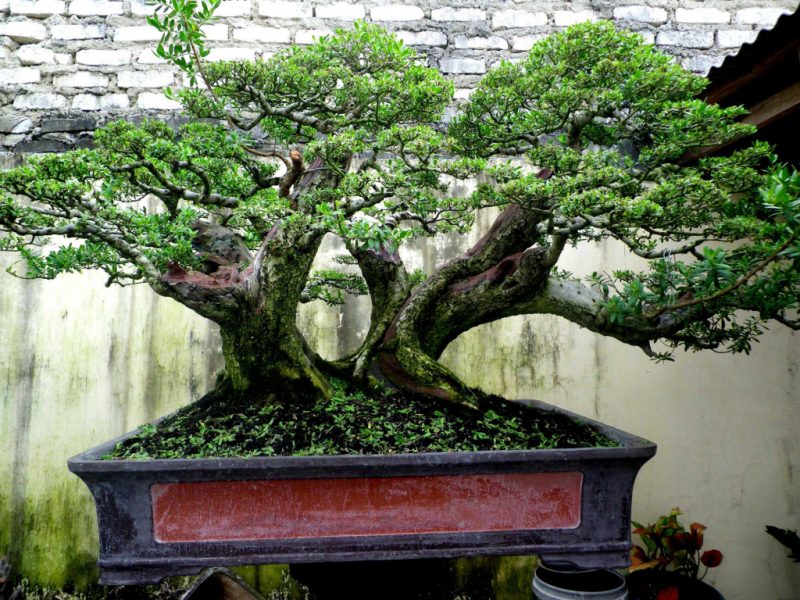
For conifers it is better to give preference to monophonic capacities. If you decide to grow a flowering tree, then you can pick up a pot of bright color.
Single trees harmoniously look in oval-shaped pots. For cascading compositions, it is worth choosing not wide square containers. A bonsai with a multi-barrel shape or a thick crown will look great in wide and flat containers.
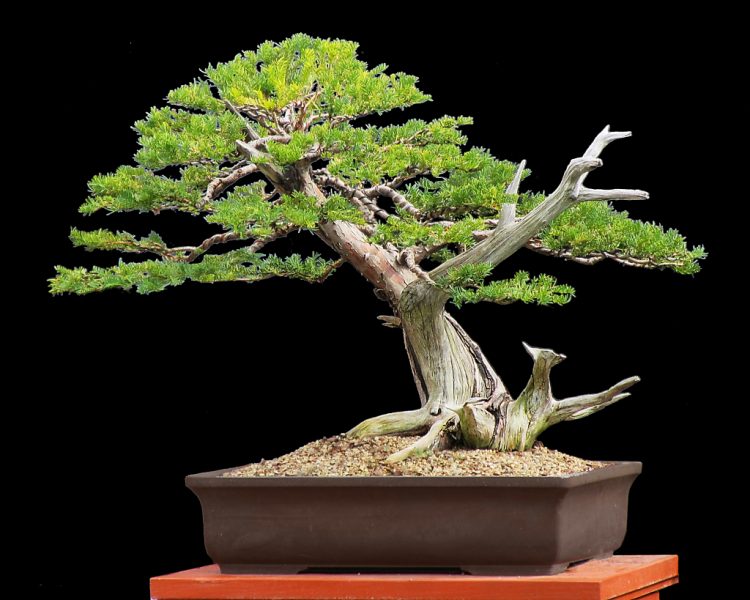
To prepare the soil for a miniature tree, use the following components:
- Sand - it will make the soil more loose. Before mixing, the component should be washed and dried in the oven.
- Clay - able to pass air and absorb moisture. Due to this feature, useful components are supplied to the tree in equal quantities.
- Organic additives - peat, leaf and coniferous soil.Before mixing, it is also recommended to keep them in the oven for several minutes to exclude the possibility of infection with fungal diseases.
Bonsai tree care at home
Looking after a bonsai tree is necessary throughout his life.
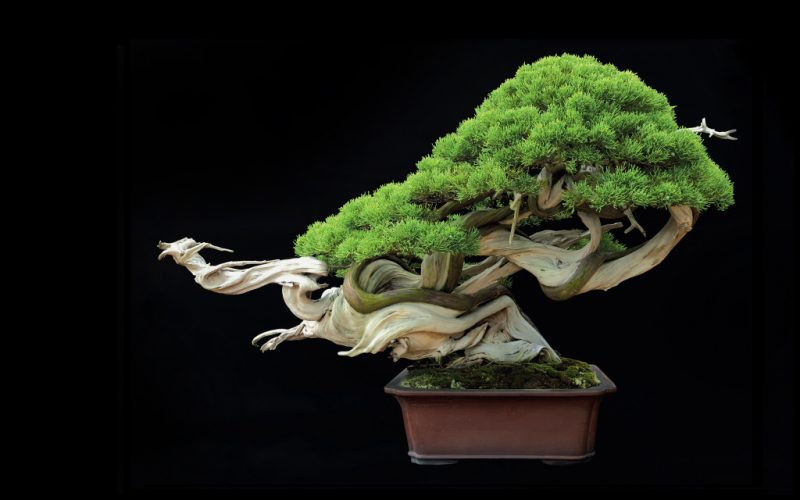
Basic care tips:
- Accommodation Choosing a plant taking into account the climate of the region, you can be sure that it will feel comfortable both indoors and outdoors. Bonsay need to provide the necessary amount of light. Some plants are initially grown in a room, and only then on a personal plot. If the tree is constantly growing indoors, do not forget about regular ventilation.
- Properly selected container and soil. The soil must have a water throughput; it is advisable to lay a drainage layer at the bottom of the pot. In order for the root system to develop correctly, it is better to take containers not deep.
- Watering. Based on the fact that the tree grows in a small pot, there are several methods of watering the plant. Firstly, it can be a direct application of water under the root system. Secondly, the pot can be dipped in a container of water so that the soil is saturated through the drainage holes. Before irrigation, tap water must be defended or passed through a filter.
- Spraying in the summer is recommended to be carried out daily, in the winter - 1-2 times a week.
- Top dressing is carried out 1 time in 7-10 days. You can use urea, sapropel.
Important pruning tips
To form the correct crown, pruning is performed. It allows not only to reduce the size of the tree, but also to form the correct direction of growth of branches. Such measures give a serious burden on the plant, so they need to be done only on healthy plants.
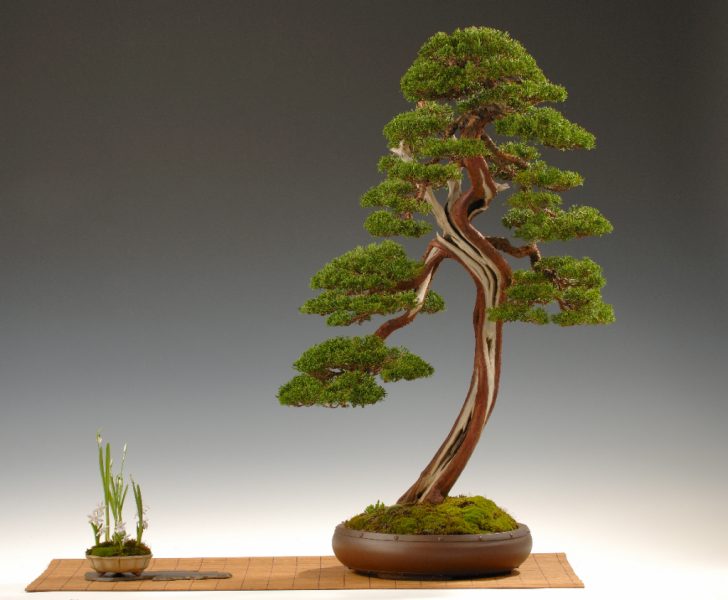
Types of pruning to help create bonsai:
- formative - the trunk is truncated, and large branches are cut, this helps to create the shape of the future plant;
- reducing the size of the branches allows you to form a volume and give the plant a neat appearance;
- shortening of young processes;
- to control growth, a light pinch is done;
- pruning of roots allows you to build a new root mass.
Pay attention to trim the root system and form the crown must be proportionate and balanced.
Problems, Diseases and Pests
No matter how carefully you follow the plant, there is still a risk of its defeat by various diseases and pests. Inspect the tree regularly, with particular attention to the inside of the leaves.

Most often, bonsai encounters the following problems:
- thrips;
- aphid;
- scale shield;
- powdery worm;
- whitefly;
- spider mite.
If pests were found on the plant, then initially, if possible, they must be collected manually, and only then treated with the appropriate drug. Carefully monitor the dosage, it should not exceed the stated requirements. Spraying is carried out at a distance of 40 cm.
What does the tree symbolize
A healthy bonsai tree can radiate active energy. If you want to increase efficiency, then decorative trees can be arranged in different rooms.
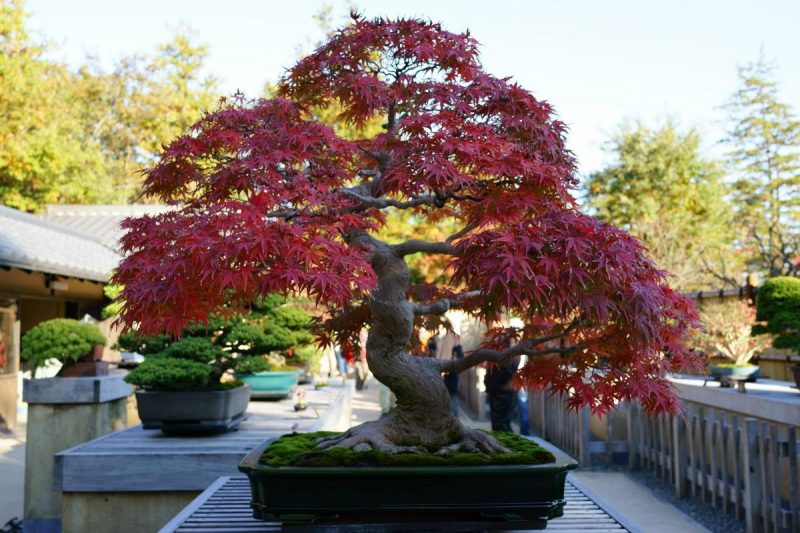
Different types of bonsai symbolize:
- acacia - provides protection, gives vitality;
- lemon - longevity, love, health;
- juniper - from the evil eye, has antimicrobial effects;
- pine - prosperity and spiritual development, brings health and longevity.
One of the most popular bonsai plants is the money tree. A neat and pretty pretty tree will become a real decoration of a room or garden. In order to make bonsai from a money tree, you should adhere to all the rules that we talked about above.
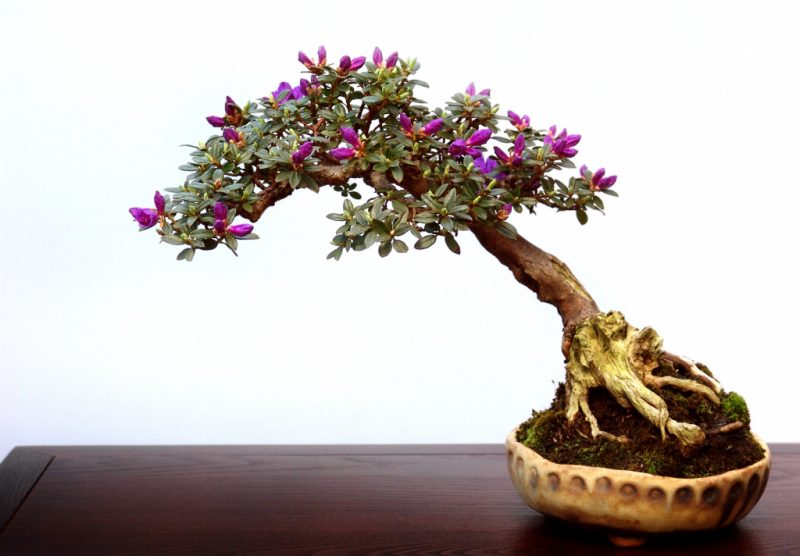
Growing and caring for a bonsai tree is a real hobby that can easily turn into a hobby. Follow the basic rules, and an exotic copy is sure to appear in your collection.












